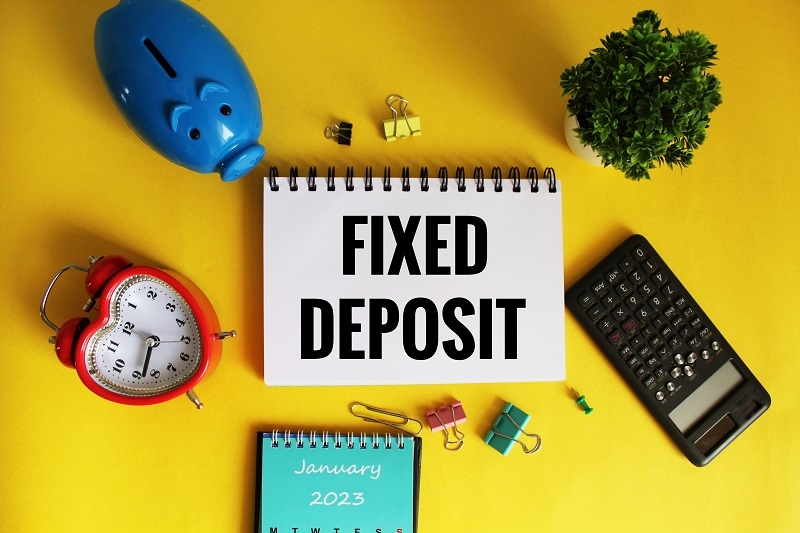
Saving is not merely depositing cash into the bank—it's making wise choices that increase your money. Perhaps the clearest and safest way to do that in America is through fixed-deposit savings, better known there as Certificates of Deposit (CDs). You invest money for a fixed period at a fixed interest rate, and you receive fixed returns on it as compensation.
This blog will explore how fixed deposit savings work in the U.S., how to choose the right CD, how interest is calculated, and why comparing rates is crucial. We’ll also examine the pros and cons, how CDs compare with regular savings accounts, and which accounts are leading the way in 2025.
Fixed deposit savings in the USA are commonly known as Certificates of Deposit. If you buy a CD, you're putting money in a savings account for some time—say, between a few months and a few years—at a fixed interest rate. You cannot withdraw money during this time without paying a penalty.
They are most appropriate with those who have particular financial objectives and do not require liquidity at any point in time.
Know how FD interest is calculated USA style may enable you to make the most of your deposit. Compound interest is used by most banks, unlike simple interest, which makes your money multiply as time goes on.
For example, a 12-month CD with a $5,000 deposit earning 4.5% APY compounded monthly will gain slightly more than $225 in interest when maturity arrives. Compounding frequency does matter—daily compounding brings slightly more than monthly or quarterly.
Always compare CDs by comparing the APY. It reflects the true earnings more accurately than just the base rate.
One of the biggest saving options is a savings account vs a fixed deposit. In savings account vs FD USA, what is better for you depends on your needs.
The key differences are as follows:
The bottom line is that if convenience, ease of access, and flexibility in money concern you, then a savings account is your choice. But if you desire a secure return and will not need the money in the near future, fixed deposit savings are more likely to grow.
Prior to depositing your money into a CD, comparing US fixed deposit rates is important. Not all banks provide the same interest rate, and even a minor variation in rate can affect your overall return in the long run.
Find reputable comparison sites online, or go to the banks' sites directly. Pre-comparing rates will always result in a more advantageous return.

As money markets develop, so too do credit union and bank products. To get the best FD accounts in 2025, don't simply look at the interest rate.
A few of the online banks and credit unions are providing competitive CD offers by 2025. Take, for instance, Ally Bank, Capital One, and PenFed Credit Union as good examples of solid CD products by financial institutions. Always read the terms and conditions before deciding.
All savings instruments have advantages and disadvantages. Understanding the FD benefits and drawbacks that US banks provide, you can decide whether this investment is part of your plan.
Analyzing these advantages and disadvantages will allow you to determine if fixed deposit savings are appropriate for your needs.
To get more out of your CDs, attempt to implement measures to maximize return and be flexible.
Split your savings across different CDs with dissimilar maturity periods. For instance, purchase 1-year, 2-year, and 3-year CDs. When one of the 1-year CDs matures, reinvest it in another 3-year CD. This way, you get access to some of your money annually but still get better long-term rates.
When the CD term comes due, do not roll over automatically. Re-shop rates and choose the best rate available in light of current offerings.
Keep some money in a high-yield savings account for liquidity and invest the remainder in fixed deposit savings to achieve better returns.
If rates are going to increase in the near future, you can try short CDs now and longer CDs later. That way, you can adapt to changing markets without tying up too long at a low rate.
These techniques enable you to have maximum security with maximum return.
Although they have many positives, CDs are not always the best option. CD savings of fixed deposit work best when your cash can be left sitter until the maturity.
Don't utilize FDs if:
Ensure you have the financial ability to have your money tied up before signing.
Fixed deposit savings, or CDs, are among the safest and most secure ways to save more without risking your savings to the market. With a guaranteed return, low risk, and assured interest, it is best for individuals who need assurance and can foresee their finances with certainty.
But to achieve their maximum returns, an individual needs to compare the USA savings rates of fixed deposits, understand how American FD interest is calculated, and make a wise decision while comparing FD and USA savings accounts.
This content was created by AI